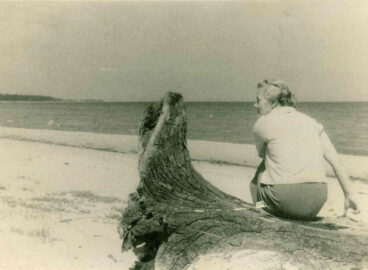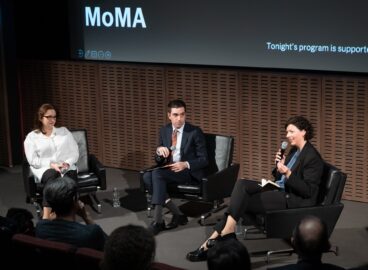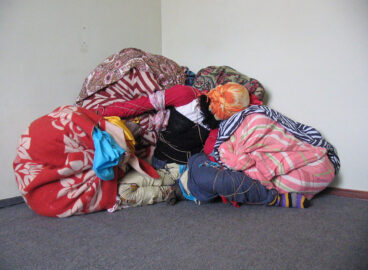In this two-part text and video interview, Michelle Elligott, Chief of Archives, Library, and Research Collections at MoMA, speaks with Maciej Cholewiński, Archivist at Muzeum Sztuki in Łodz (MSŁ). They discuss the history and holdings of MSŁ, which include the original manuscript for Władysław Strzemiński’s Theory of Vision (Teoria widzenia) as well as an auto-biography and manifestos by Tadeusz Kantor. Cholewiński and Elligott reflect on the ability to “touch” history in the archive and the role of archives in building an institution.
This interview was recorded on the C-MAP Central and Eastern European Trip to Warsaw, Łodz, and Berlin in 2016.

Michelle Elligott (ME): I would like to talk about the unique holdings of your institution, Muzeum Sztuki in Łodz (MSŁ). Could you tell us about how the archives were established? Were they kept since the founding of your institution or are they a newer program?
Maciej Cholewiński (MC): Not many people know that Muzeum Sztuki in Łodz was the first museum of modern art in the world, established in 1930 in Łodz’s town hall on Freedom Square (Plac Wolności). We moved into this current building known as Ms1 at 36 Więckowskiego Street in 1948.
ME: Was the archive already established at that time?
MC: The MSŁ library was founded with the museum, and it was public, so anyone could come and access the materials. Today, it is one of the oldest libraries in Poland dedicated to art. We collect books only about art, artists, and exhibitions.
ME: And unlike The Museum of Modern Art in New York, which is a private museum where we keep all of the archives within the museum, can you talk a little bit about how the museum here is structured and how the archives are organized? It is my understanding that some are transferred to another archive at some point and other, documentary materials are retained here? Do you have a relationship with the Polish National Archives, for example?
MC: We have a couple different collections in our archives. We hold the archives of people who have worked here. We also have files about our exhibitions as well as some very logistical files, like how much we had to pay for new windows or something like that. Those kinds of documents go the National Archive in Warsaw after a few years, but before that happens, we make digital copies of the most interesting documents, so they can still be accessed here. Then, of course, we have books and catalogues, about 60,000 in total, plus newspapers and magazines from all over the world since the beginning of the nineteenth century. We also have press clippings about our museum and a digital collection of interviews with artists. Finally, we have a photo archive of exhibitions and openings and a database of the works in our collection.
ME: I was very impressed by the photographs in your online digital archive. Can you talk a little bit about the materials you have made available on your website?
MC: The online collection contains between 15,000 to 16,000 photographs –installation images from exhibitions and of artworks—from the 1930s to the late 1980s. I spent nine years digitizing and identifying these materials to the extent that I could recognize all or most individuals in the photographs.
ME: Nine years! That’s a big project.
MC: And we are still working on it, as we are constantly mounting new exhibitions.


